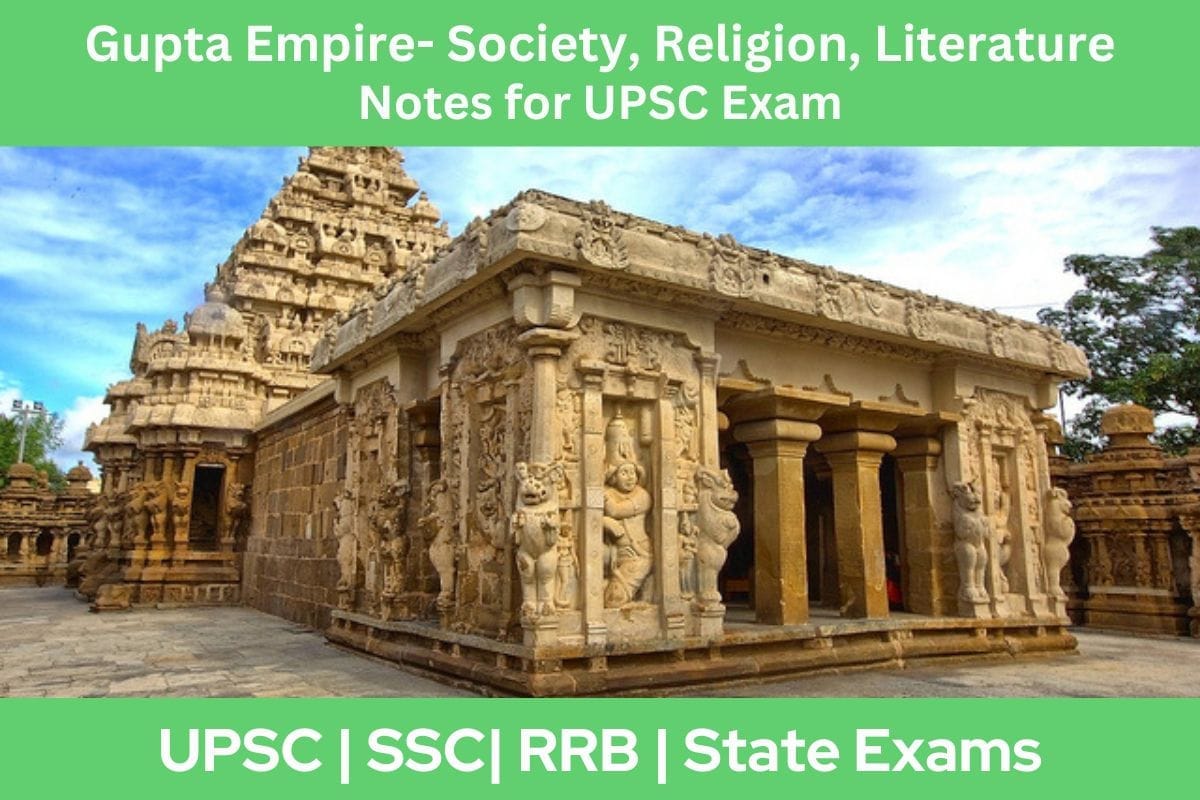
1. Chandalas and Social Distinctions:
- Fa-Hien, the Chinese traveler, observed Chandalas living outside villages, maintaining distance from upper castes.
- Chandalas had to announce their arrival to avoid contact and prevent pollution, reflecting hierarchical social norms.
2. Untouchability and Water Contamination:
- Acharakkovai mentioned untouchables, known as Pulaiya, making water unfit for higher castes.
- The text highlighted the rigid caste-based social structure during the Gupta period.
3. Foreigners and Sub-Castes:
- Gupta Empire assigned sub-castes to assimilated foreigners, showcasing flexibility in incorporating newcomers.
- Foreign ruling families of the pre-Gupta period received semi-Kshatriya status.
4. Assimilation of Tribal Communities:
- Gupta Empire expanded Brahminical culture, assimilating tribal communities into the social structure.
- Tribal leaders became Kshatriyas, while ordinary tribals were granted Shudra status.
5. Social and Economic Status of Shudras:
- Gupta period marked an improvement in the social and economic status of Shudras.
- Shudras were allowed to listen to epics and perform certain rituals, indicating increased social acceptance.
6. Worship of Shudras during Gupta Period:
- Shudras in the Gupta period were allowed to worship the deity Krishna.
- This demonstrated the expansion of religious practices and the inclusion of new deities.
7. Narada Smriti on Slavery:
- Narada Smriti mentioned fifteen types of slaves, discussing their roles as domestic servants.
- Insights into the institution of slavery during the Gupta era.
8. Emergence of Tantrism:
- Tantrism emerged during the Gupta period due to assimilation of tribal elements and blending Brahminical religion with tribal practices.
- Signified the development of Tantrism as a distinct religious and philosophical tradition.
9. Compilation of Ramayana and Mahabharata:
- Gupta period saw the compilation of the Ramayana and Mahabharata in the 4th century CE.
- These epics played a pivotal role in shaping Indian culture and mythology.
10. Sanskrit as Language of Royal Inscriptions:
- During Gupta period, Sanskrit became the language of royal inscriptions.
- Consolidation of Brahmanical ideology and popularity of temple-based sectarian cults.
11. Gupta Kings as Bhagavatas:
- Gupta kings proclaimed themselves as Bhagavatas, emphasizing devotion to the deity Bhagavat (Vishnu).
- The emblem of Bhagavata was Garuda, symbolizing their spiritual alignment.
12. Emergence of Composite Deities:
- Gupta period witnessed the emergence of composite deities like Hari-Hara, combining aspects of Vishnu and Shiva.
- Reflects religious syncretism during the Gupta era.
13. Nalanda as Center of Education:
- During the Gupta period, Nalanda became a renowned center of education, especially for Mahayana Buddhism.
- Attracted students from various countries, significant for learning and religious scholarship.
14. Puranas Written During Gupta Period:
- Major Puranas like Vishnu Purana, Vayu Purana, and Matsya Purana were written during the Gupta period.
- Contributions to preserving religious and mythological narratives.
15. Works Attributed to Kalidasa:
- Kalidasa’s notable works include Meghaduta, Abhijyanashakuntalam, Kumarasambhavam, and Raghuvamsha.
- Mrichchhkatikam was composed by Shudraka.
16. Authorship of Mudrarakshasa and Devichandraguptam:
- Vishakhadatta authored Mudrarakshasa and Devichandraguptam.
- Mudrarakshasa portrays political intrigues during Chandragupta Maurya’s reign.
17. Authorship of Panchatantra:
- Vishnusharman is the author of the Panchatantra, a collection of ancient Indian fables.
- Offers moral guidance through engaging animal stories.
18. Kalidasa’s Ritusamhara:
- Kalidasa’s Ritusamhara beautifully describes the cycle of seasons.
- Illustrates the poet’s mastery of diverse themes.
19. Writer of Kiratarjuniya in the 6th Century:
- Bharavi, a 6th-century poet, wrote Kiratarjuniya, depicting the combat between Arjuna and Lord Shiva.
20. Dandin’s Contributions:
- Dandin, during the Gupta period, wrote Kavyadarshana (treatise on poetics) and Dasakumaracharita (prose romance).
- Significant contributions to literature and grammar.
21. Author of Amarakosha:
- Amarshimha authored the Sanskrit lexicon Amarakosha.
- An important reference for understanding the meaning and usage of Sanskrit words.
22. Kalidasa’s Impact on European Languages:
- Kalidasa’s works, translated into many European languages, made him a celebrated classical Sanskrit poet.
- Meghaduta, Abhijyanashakuntalam, Kumarasambhavam, and Raghuvamsha are renowned for their literary brilliance.







